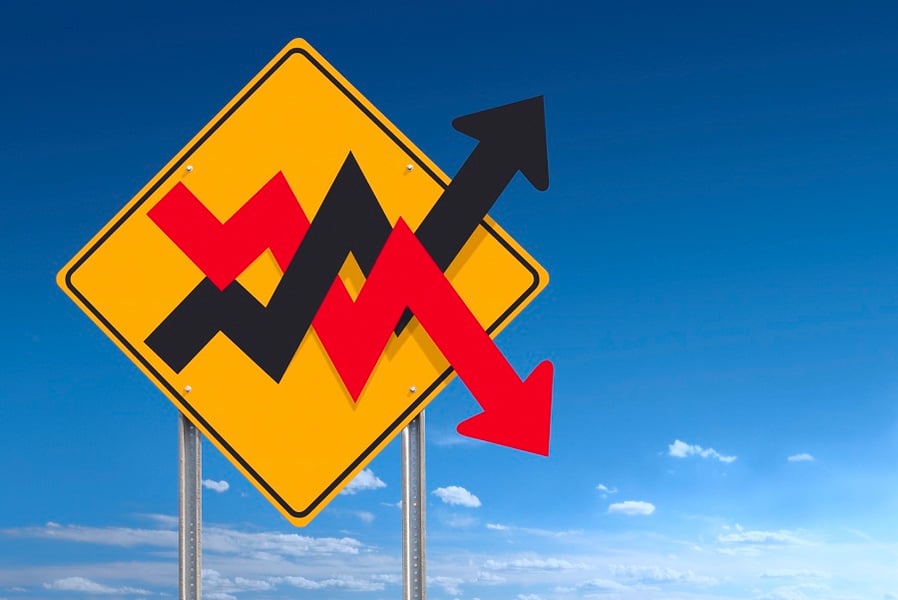

In an era where geopolitical shocks and tariff news push US stocks around by the hour, investors can be forgiven for remaining on the sidelines, though such a decision has been costly given the equity rebound this year. Now an $80 billion fund manager is introducing a new strategy for those looking to play defense while staying in the game.
The new suite of so-called buffer funds, managed by ProShares and launching on Thursday, aims to protect holders against modest losses in the equity market while still offering a measure of upside. The funds’ risk levels reset with every trading session, a feature the company says makes them the first of their kind.
“These ETFs are designed to smooth out the ride to help investors stay the course through uncertainty,” said Mo Haghbin, head of strategic ETFs at ProShares. “Many investors worry so much about volatility and drawdowns that they do the wrong things.”
Buffer ETFs are part of the broader boom in derivatives-powered funds that BlackRock Inc. projects could hit $650 billion by 2030 as investors seek fresh strategies to hedge and diversify portfolios.
The idea is simple: When stocks drop, the ETFs cushion the fall, shielding investors from some measure of losses. When the market rises, they deliver gains, though these too are capped.
ProShares’ S&P 500 Dynamic Daily Buffer ETF (ticker FB), the Nasdaq-100 Dynamic Daily Buffer ETF (QB) and the Russell 2000 Dynamic Daily Buffer ETF (RB) track their three respective indexes. The passively-managed funds accomplish their “buffering” with equity options that expire the next day, absorbing between 1% to 5% of losses while also capping gains by a similar amount when markets rise.
Both the cap and the buffer are adjusted daily based on volatility, using derivatives. All carry an expense ratio of 0.58%.
The company says the funds target long-term, risk-sensitive investors — think retirees and wealth managers — who want to stay in equities without having their portfolios rocked by big market swings during uncertain times.
Because daily buffer ETFs reset their exposure every day, they eliminate the need to time entry points precisely over a long horizon, ProShares’ Haghbin said.
By contrast, many traditional buffer ETFs are designed for investors to hold the product through the entire outcome period — often between one to 12 months — to fully benefit from the downside protection. Entering or exiting mid-period can result in different risk/return exposure than originally advertised.
The appeal of buffer ETFs may be strong in a market whose steep declines and unexpected rallies have wrongfooted investors. The S&P 500 surged to new highs early in the year, only to retreat as the trade war flared before staging a seemingly improbable bounceback.
Assets under management for the category hit $68 billion in 2025, data by Bloomberg Intelligence show.
At the same time, the strategy has received mixed reviews from some market participants. AQR Capital Management argued earlier this year that buffer funds deliver lower returns with more risk than simpler, vanilla alternatives.
The Cboe Russell 2000 Daily Buffer Index (RTYDBI), which tracks the performance of a hypothetical daily buffer strategy applied to the small-cap focused index, outperformed the comparable vanilla buy-and-hold cash trade year-to-date, though those targeting S&P 500 and Nasdaq 100 have fared worse.
Bryan Armour of Morningstar Inc. noted that while the funds may limit small losses, holders remain vulnerable to larger drawdowns while also forgoing gains beyond the cap — a tradeoff that could be a tough sell to longer-term investors. He also raised concerns about potential costs and so-called performance drag.
Rafael Zayas, head of portfolio management and trading at Vident Asset Management, said the strategy is more complex than it may initially appear.
“Understanding the outcome requires considering how returns compound, which can often be unintuitive,” he said.

Chasing productivity is one thing, but when you're cutting corners, missing details, and making mistakes, it's time to take a step back.

It is not clear how many employees will be affected, but none of the private partnership’s 20,000 financial advisors will see their jobs at risk.

The historic summer sitting saw a roughly two-thirds pass rate, with most CFP hopefuls falling in the under-40 age group.

"The greed and deception of this Ponzi scheme has resulted in the same way they have throughout history," said Daniel Brubaker, U.S. Postal Inspection Service inspector in charge.

Elsewhere, an advisor formerly with a Commonwealth affiliate firm is launching her own independent practice with an Osaic OSJ.
Stan Gregor, Chairman & CEO of Summit Financial Holdings, explores how RIAs can meet growing demand for family office-style services among mass affluent clients through tax-first planning, technology, and collaboration—positioning firms for long-term success
Chris Vizzi, Co-Founder & Partner of South Coast Investment Advisors, LLC, shares how 2025 estate tax changes—$13.99M per person—offer more than tax savings. Learn how to pass on purpose, values, and vision to unite generations and give wealth lasting meaning
